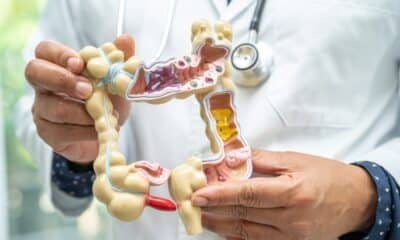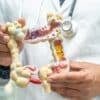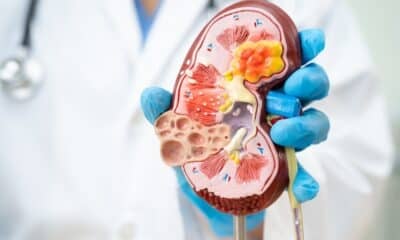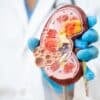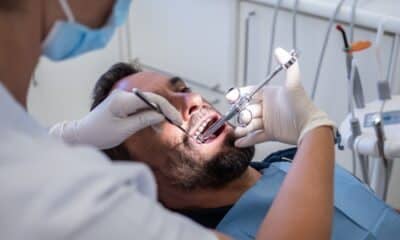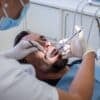Tips To Heal Faster From A Severe Dental Trauma
Suffering a severe dental trauma is distressing, with recovery often being a journey into the unknown for many patients. Prompt dental care is crucial, and the following recuperation phase is equally significant. It includes gaining an understanding of the nature of the trauma, exploring available treatment options, strategies for managing discomfort, and the critical role of continual dental check-ups. Let’s delve deeper into these aspects to better prepare for handling such unfortunate incidents and to pave the way for effective healing.
Comprehending Dental Trauma
Dental trauma refers to injuries inflicted upon the teeth, gums, lips, or any part of the oral cavity. Such injuries can arise from various incidents, including accidental falls, sports injuries, fights, or vehicular accidents. Dental traumas can range from minor chips to extensive damage like the loss of multiple teeth or jawbone fractures.
Dental trauma is categorized into different types, such as dental fractures, luxation, avulsion, and root fractures. Each category of injury brings its unique set of challenges and necessitates distinct dental treatments. Dental fractures are cracks or breaks in a tooth. Luxation involves the displacement of a tooth, avulsion is the complete knocking out of a tooth, and root fractures concern damage to the tooth’s root, often requiring intricate solutions.
Moreover, dental trauma can lead to notable psychological effects on individuals. Immediate changes in appearance can affect self-image and cause social uneasiness. The prospect of undergoing dental treatments can also engender trepidation or anxiety, accentuating the need for comprehensive care in these situations to tackle both the physical and psychological ramifications.
Immediate Measures After Injury
Timely and appropriate response post-dental injury is paramount for favorable outcomes. The foremost response involves first aid, concentrating on halting bleeding, alleviating pain, and preventing additional harm. During dental trauma, soft tissue injuries are prevalent. Using a sterile, moist cloth or gauze to control bleeding and taking over-the-counter analgesics can help mitigate discomfort.
In addition, it is crucial to protect any extricated teeth or tooth fragments. If feasible, reposition the tooth back into its socket or preserve its humidity by submerging it in milk or an ADA-endorsed tooth-saving solution, enabling potential reattachment.
Following first aid, immediate emergency dental care is imperative. Dental experts possess the requisite expertise and tools to further diagnose and treat the injury. Some injuries may seem minor but carry hidden complexities that only qualified dental professionals can ascertain. Prompt action coupled with dental expertise forms the optimal path to recovery after dental injury.
Assessing the Gravity of Your Injury
Once initial aid is provided and you’ve contacted a dentist, the next course of action involves assessing the injury’s severity. This assessment phase, focusing on symptom analysis, is pivotal in ascertaining the injury’s classification, thereby guiding further treatment.
The range of dental injuries spans from trivial, such as a slight tooth chip, to intense, like teeth displacement or avulsion. Severity is generally gauged based on symptoms including pain, sensitivity, hemorrhage, swelling, restricted mouth opening, and observable damage to the tooth or nearby tissues. It is vital to accurately report these symptoms to your dentist.
The injury classification is then defined in line with established dental trauma protocols. For example, a minor chip might be termed an uncomplicated crown fracture, whereas an entirely knocked-out tooth is considered an avulsion, indicating severe dental trauma.
Investigating Treatment Paths
A crucial element of recovering from dental trauma is the investigation of potential treatment avenues. Being informed about the variety of dental injury treatments can assist in more judicious decision-making, which could, in turn, enhance healing prospects. The discussion will include an exploration of treatment methodologies and spotlight the latest advances in dental rehabilitation.
Demystifying Dental Injury Treatments
Navigating the array of treatments for dental injuries can be daunting. Various options exist, each tailored to rectify a particular injury type and reinstate oral health. Two prevalent treatments involve tooth avulsion management and crown reconstruction.
Tooth avulsion denotes a condition where a tooth has been completely ejected from the socket, demanding immediate medical care. The primary objective is to replant the tooth as swiftly as possible to maintain its vitality. The tooth is meticulously cleansed, re-situated, and anchored to neighboring teeth with a splint to promote reintegration into the socket.
Conversely, crown reconstruction is employed to repair a tooth that has sustained significant damage yet remains in place. Damage may stem from decay, breakage, or trauma. The affected tooth area is removed, the site is prepped, and a custom-fit crown is affixed over the residual structure. Crowns are typically composed of materials like porcelain and serve to restore the tooth’s contour, size, strength, and aesthetic.
Familiarity with these treatments not only clarifies the recuperation process but also emphasizes the criticality of immediate dental care post-injury.
Balancing Treatment Approaches
Surveying dental injury treatment options reveals that each approach has its merits and potential downsides. In severe cases, surgical interventions may be necessary. These procedures, while often effective in restoring oral functionality and appearance, can involve intricate methodologies, carry inherent risks, and necessitate prolonged healing times.
Less invasive yet functional alternatives, such as dental implants, crowns, and bridges, exist. These methods aim to replace or repair damaged teeth, enhancing both functionality and oral aesthetics. Nevertheless, these treatments might not suit everyone due to criteria like oral health status and cost factors.
Additionally, non-surgical treatments like root canal therapy and tooth extraction are prevalent choices. These interventions are typically less daunting, more affordable, but may necessitate subsequent restorative procedures.
The appropriateness of a treatment method depends on the patient’s individual requirements and context. Considerations such as the gravity of the injury, patient health, financial circumstances, and personal preferences will influence the choice of treatment. The primary aim is the restoration of dental function and aesthetics, while ensuring patient comfort and quality of life.
Progress in Dental Rehabilitation
Given the comprehensive array of treatment choices for dental trauma, ongoing innovation in dental rehabilitation has introduced more progressive and efficient alternatives.For example, dental implants represent a widely chosen option, utilizing state-of-the-art materials and digital molds to restore both function and appearance. The accuracy of 3D printing technologies enhances the durability and lifelike quality of these implants.
Likewise, there is a growing embrace of regenerative methods. These biomimetic strategies aspire to replicate the natural makeup and operation of our teeth, fostering recovery and limiting the need for additional treatments. With technological progress, such complex methods are within easier reach.
Educating patients is a crucial component of these advancements. Patients armed with knowledge can make decisions about their care that lead to better health outcomes. In our tech-centric era, teledentistry has become a powerful means for healthcare professionals to impart knowledge to patients at a distance.
A comprehensive care approach ensures all-encompassing treatment, involving the full spectrum of dental health. This approach often makes use of less invasive techniques, aiming to conserve natural tooth structure while still addressing dental issues. These developments are indicative of a move towards dental rehabilitation practices that are more centered around and beneficial to patients.
Managing Pain And Discomfort
Encountering the aftermath of dental trauma can often feel like navigating unknown waters. A crucial aspect of the healing experience is the management of pain and discomfort. It is an important element of the recovery journey, and effectively lessening these symptoms can profoundly affect one’s healing.
A common yet helpful pain management strategy is the application of ice packs. By placing an ice pack on the injured area, swelling can be reduced and pain numbed, offering short-lived comfort. It is advisable to use an ice pack for 15-minute intervals every hour during the first day following the injury.
Moreover, engaging in relaxation techniques can help with pain relief. Strategies such as deep breathing exercises and guided visualization can produce a soothing mental effect, thereby diminishing pain sensation.
It’s essential to recognize that these tactics are not replacements for professional dental attention, but rather they can ease discomfort until professional help is available. Understanding these pain management techniques can give individuals an active part in their own recovery process.
Role Of Medications In Recovery
In the healing phases after dental trauma, medications serve a crucial function. Not only do they help with pain, but they can also prevent infections with the proper use of antibiotics. Nevertheless, it’s critical to be aware of their potential side effects and interactions to ensure a secure and successful healing period.
Understanding Pain Management Medications
Pain management medications are often essential in the road to recovery from dental trauma, playing a pivotal role in easing associated discomfort, facilitating smoother healing, and enhancing quality of life while recovering.
Familiarity with these medicinal drugs is key to effective pain management. NSAIDs like ibuprofen are common first-line treatments for mild to moderate dental pain, providing pain relief. For more intense pain, opioids may be prescribed and can be used together with NSAIDs.
However, it’s critical to consider interactions with other medications one might be taking. Drug interactions could lessen pain medication efficacy or lead to unwanted side effects, underscoring the importance of informing your dentist about all medications currently in use.
Antibiotics for Dental Trauma
Post dental trauma, antibiotics might be part of the recovery strategy, aiming to treat or prevent infections that could arise.
Knowing the types of antibiotics used is beneficial for recovery. Broad-spectrum antibiotics, for instance, amoxicillin or clindamycin, are often prescribed for dental infections because they target a wide range of bacteria, either by destroying them or inhibiting their growth, therefore aiding in prevention and recovery.
The specific antibiotic and the length of treatment will depend on the injury’s severity, the infection’s scope, and the patient’s medical history. It’s not uncommon for multiple antibiotics to be used in combination to address a wider array of bacteria.
Following the antibiotic regimen exactly as prescribed is imperative for effective infection prevention. Incorrect or incomplete usage of antibiotics can result in antibiotic resistance or further health issues.
Side Effects and Risks
While medications are essential in treating traumatic dental injuries, it is also important to be cognizant of their potential side effects and risks. Painkillers, antibiotics, and anti-inflammatory medicines may result in side effects ranging from mild issues like nausea and drowsiness to more severe complications like digestive problems or allergic reactions.
The possibility of long-term impact from these medications, such as dependency or increased tolerance from extended pain medication use, is another consideration. Overuse of antibiotics can contribute to a global concern: antibiotic resistance.
Additionally, the psychological effects of a dental injury and its treatment shouldn’t be ignored. Dental procedures can provoke anxiety, which may be intensified by the discomfort and stress of recovery. Some medications can also influence one’s mood or anxiety levels.
Maintaining open communication with dental professionals about these risks is essential. Understanding the balance between medication benefits and potential side effects is crucial for a successful and healthy recovery.
Importance Of Dental Follow-Ups
In the sequels of traumatic dental events, regular and timely dental follow-ups are fundamental to ensuring optimal recovery. These assessments are crucial to monitor the healing, catch complications early, and provide necessary interventions for optimal oral health.
Patient adherence to these follow-up schedules is crucial. It allows for orderly evaluation of the treatment’s success and the injury’s progression, plus the chance for timely adjustments based on patient improvement.
An initial assessment might occur within 24-48 hours of the injury, with subsequent appointments at prescribed intervals. As the patient’s condition betterment, visit frequency often lessens. Nonetheless, follow-up timelines will vary according to the injury’s nature and severity.
Dental follow-ups are more than routine checks; theyEssential follow-up appointments are a cornerstone in the path to complete healing. They play a vital role in a patient’s recuperation, encouraging active participation in oral health and facilitating a customized and planned approach to recovery. Therefore, the importance of post-treatment dental check-ins is paramount.
Averting Future Dental Injuries
The best defense against future dental injuries is preparedness. Protective equipment, including mouth guards and helmets, can significantly lower the chance of dental trauma, especially in sports settings. Adherence to precautionary measures, like refraining from using teeth as tools to open items or chew on hard objects, is also crucial in preventing injuries.
Maintaining good dental hygiene is indispensable for preserving overall oral health and reducing the likelihood of dental injuries. Habitual teeth cleaning, flossing, and regular dental visits are key in spotting early warning signs of oral problems and ensuring prompt action is taken.
For those involved in sports, it’s important to be informed about the potential for dental injuries and the necessity for wearing protective gear. Coaches and athletes should participate in educational programs on dental safety. Having access to immediate emergency contacts can also quicken the response in the event of an injury, possibly lessening the severity.
Frequently Asked Questions
How Can Dental Injuries Impact Long-Term Oral Health?
Dental injuries can have enduring repercussions such as tooth displacement, misalignment, and nerve damage that affect overall oral wellness. Proactive steps like routine dental assessments can help reduce these long-term effects and maintain optimal oral health.
Can Traumatic Dental Injuries Cause Emotional Issues Such as Anxiety or Dental Phobia?
Indeed, traumatic dental experiences may induce emotional issues including anxiety or dental phobia. Individual reactions to trauma can vary, highlighting the need for both mental and physical rehabilitation in comprehensive dental trauma care.
What Dietary Changes Are Necessary After a Traumatic Dental Injury?
Post-injury, altering one’s diet is necessary. Eating softer foods can lessen discomfort and avert additional harm to the teeth. To ensure sufficient nutrition intake while healing, dietary supplements might be recommended.
What is the Impact of Dental Injuries on Everyday Functions Like Talking or Eating?
Dental injuries can interfere significantly with daily life. Changes in tooth and tongue position may cause speech challenges. Difficulties may also arise while eating, presenting pain or discomfort, which calls for dietary adjustments throughout the recovery period.
Are Support Groups or Other Resources Available for Those Who Have Experienced Dental Trauma?
Certainly, there is a range of support networks and resources available for those who have suffered from dental trauma. These resources include, but are not limited to, online support forums, counseling services, and dental associations that provide help and emotional support throughout the healing journey.


